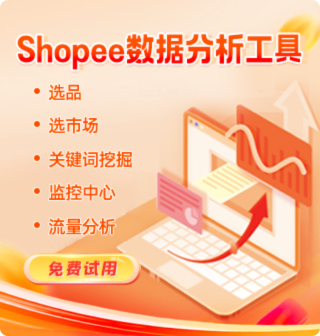-
用户112****3886
How to Do Shopee: A Comprehensive Guide for New Sellers
Shopee has emerged as one of Southeast Asia’s largest e-commerce platforms, providing a powerful opportunity for individuals and businesses to reach millions of customers across the region. Whether you are a startup, small business, or established brand, knowing how to do Shopee — that is, how to successfully sell and grow your store on Shopee — is vital to maximizing your online sales potential. This article offers a detailed, step-by-step guide to getting started on Shopee, along with practical tips and advanced strategies to boost your success.
1. Setting Up Your Shopee Seller Account
Step 1: Register as a Seller
Visit Shopee’s official website or download the Shopee Seller app.
Sign up by providing your personal or business details, email address, and phone number.
Verify your account using an OTP code sent via SMS or email.
Step 2: Submit Required Documents
Depending on your country, Shopee may require business licenses, identification documents, or tax registration certificates.
Upload these in the Seller Center to verify your account and gain full selling privileges.
Step 3: Set Up Your Store Profile
Choose a catchy store name that reflects your brand or product niche.
Upload a professional store logo and banner to build credibility.
Fill in your store’s detailed information, such as description, policies, and contact details.
2. Listing Your Products Effectively
The quality of your product listings directly impacts your sales performance.
Product Titles: Use clear and keyword-rich titles that customers are likely to search for.
Descriptions: Write detailed, accurate descriptions highlighting features, specifications, and benefits.
Images: Upload high-resolution photos showing multiple angles and usage scenarios.
Pricing: Research competitor prices and set competitive but profitable pricing.
Stock and Variants: Manage inventory carefully and list all variants (size, color, model) properly.
3. Understanding Shopee Fees and Pricing Your Products
Shopee charges sellers commission fees and payment transaction fees, usually between 1% to 5% depending on the category and market. It’s essential to factor these fees into your pricing strategy to maintain healthy profit margins.
Tips:
Use Shopee’s Seller Center tools to calculate expected fees.
Monitor promotions offering commission-free periods to reduce costs.
Price your products to stay competitive while accounting for fees and shipping.
4. Managing Orders and Logistics
Efficient handling of orders and deliveries is critical to maintaining high customer satisfaction.
Prompt Order Confirmation: Accept orders quickly to avoid cancellations.
Packaging: Use secure and attractive packaging to protect the item and enhance customer experience.
Choose the Right Shipping Method: Shopee offers integrated logistics services—use them for faster and more reliable delivery.
Provide Tracking Information: Always update tracking numbers for buyer transparency.
5. Customer Service and Store Ratings
Positive reviews and high ratings improve your store’s visibility and trustworthiness.
Respond promptly and politely to buyer inquiries and complaints.
Resolve disputes amicably and offer refunds or replacements when appropriate.
Encourage satisfied customers to leave positive feedback.
Maintain a good cancellation and refund rate to qualify for Shopee rewards.
6. Leveraging Shopee Marketing Tools
Shopee provides a suite of marketing and promotional tools sellers can use to drive traffic and boost sales:
Flash Sales: Participate in time-limited discount events to attract bargain hunters.
Vouchers and Bundles: Create exclusive discounts and product bundles.
Shopee Ads: Use pay-per-click ads to increase product visibility on search pages.
Live Streaming: Engage customers through Shopee Live sessions to showcase products and interact in real-time.
Campaign Participation: Join platform-wide campaigns such as 9.9, 11.11, and 12.12 mega sales.
7. Analyzing Performance and Continuous Improvement
Use Shopee Seller Center analytics to track your store’s performance metrics:
Sales numbers and revenue trends
Conversion rates and traffic sources
Customer reviews and ratings
Inventory turnover and order fulfillment times
Regularly review this data to identify what works and areas for improvement. Adjust pricing, marketing strategies, and inventory based on insights.
8. Advanced Tips and Best Practices
Optimize for Shopee’s Search Algorithm: Use relevant keywords in product titles, tags, and descriptions to improve search ranking.
Maintain Consistent Promotions: Repeat participation in flash sales and campaigns to build customer loyalty.
Focus on Customer Retention: Use Shopee’s loyalty programs and voucher systems to encourage repeat purchases.
Build Your Brand: Consider creating an Official Store if you have a registered brand to gain additional trust and marketing support.
Stay Up-to-Date: Shopee regularly updates policies and offers new features; keeping abreast of these can give you a competitive advantage.
9. Common Challenges and How to Overcome Them
High Competition: Differentiate your products through unique offerings, quality customer service, and competitive pricing.
Order Fulfillment Delays: Partner with reliable courier services and maintain accurate inventory levels.
Negative Reviews: Address issues professionally and learn from feedback to improve product quality and service.
Managing Cash Flow: Plan for Shopee’s payment settlement cycles and maintain proper accounting.
Conclusion
Successfully doing Shopee involves more than just listing products online. It requires strategic planning, customer-centric service, effective marketing, and constant adaptation to marketplace dynamics. By following the detailed steps outlined above and continuously optimizing your operations, you can build a thriving business on Shopee and capitalize on the fast-growing e-commerce market in Southeast Asia.
Starting strong with a clear understanding and gradually scaling your efforts will help you not only survive but thrive on Shopee’s competitive platform.

